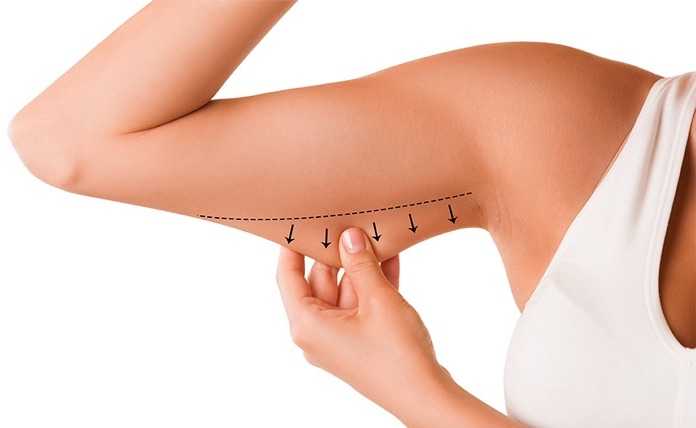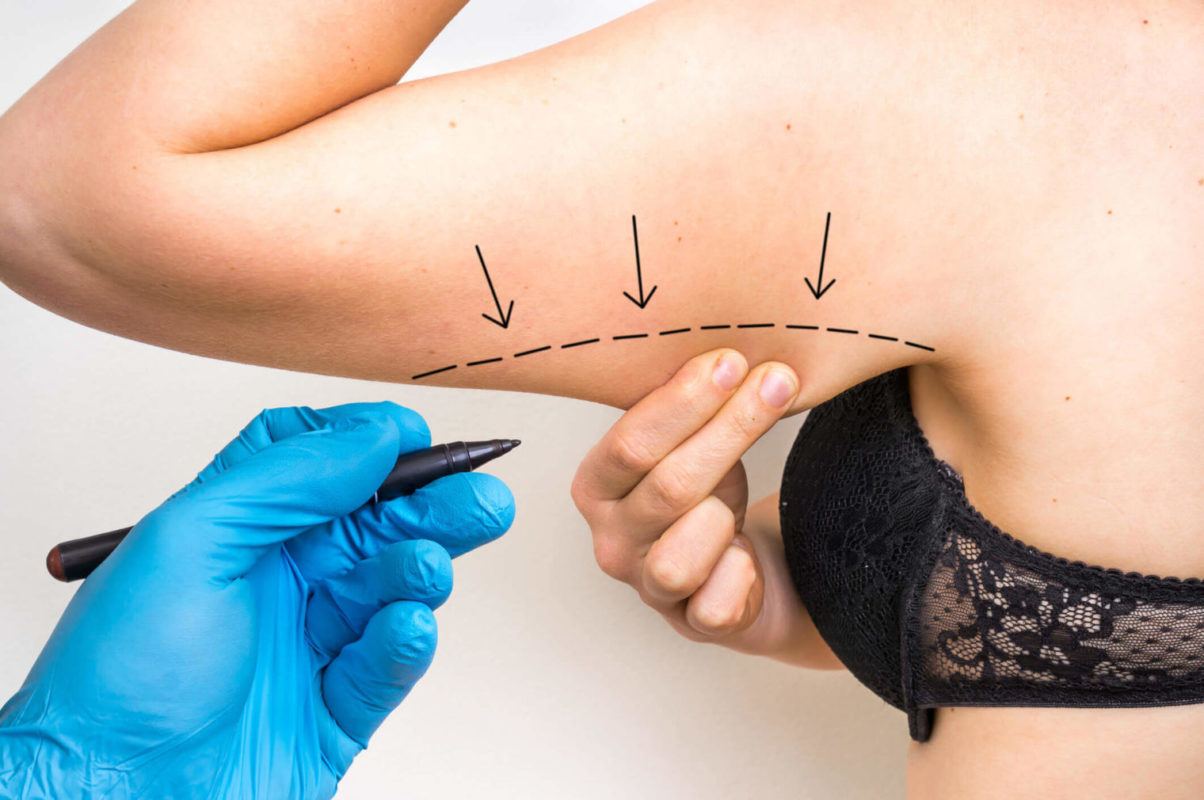Understanding the Brachioplasty Procedure
Brachioplasty, often known as an arm lift, is a surgical procedure. Its main goal is to remove excess skin and fat from the upper arms. This surgery helps create a more toned and contoured appearance.
Many opt for brachioplasty after significant weight loss or due to natural aging. The procedure can dramatically enhance the arm’s shape and boost self-confidence.
Ideal Candidates
Those considering this procedure typically struggle with sagging upper arms. They may feel self-conscious wearing short sleeves or tank tops. Ideal candidates are in good health, non-smokers, and have realistic expectations about the outcomes.
People who have undergone major weight loss or women post-bilateral mastectomy might find brachioplasty especially beneficial. It helps them reclaim their body image.
Types of Arm Lifts
There are several types of arm lifts, tailored to meet different needs.
-
Minimal incision brachioplasty targets the area near the armpit. It’s best for those with a small amount of excess skin.
-
Traditional brachioplasty involves an incision from the elbow to the armpit. It’s suited for individuals with significant excess skin and fat.
Plastic surgeons, including those specializing in boulder plastic surgery, often recommend combining brachioplasty with other procedures such as liposuction for optimal results. This combination ensures a more comprehensive improvement in arm contour and overall aesthetic appeal.
Initial Recovery Right After Surgery
Post-Op Care
After the brachioplasty procedure, patients find themselves in the recovery room. Here, immediate post-operative care begins. Nurses monitor vital signs and ensure comfort. The use of compression garments is crucial. They reduce swelling and support the healing incision sites.
Doctors often insert drainage tubes to prevent fluid accumulation. Patients must follow instructions on how to care for these tubes at home.
Activity Level
Short walks are encouraged soon after surgery. They help prevent blood clots. However, overexertion is a risk. It can lead to complications or prolong the recovery process. Patients should balance rest with gentle movements.
Healing Signs
Bruising, swelling, and discomfort are common in the first few weeks. These symptoms gradually decrease over time. By one month post-op, significant improvement is noticeable.
Patients should keep in close contact with their surgeon during this period. Any concerns about the incision site or overall recovery should be discussed promptly.
Week 1 Recovery Insights
Daily Assistance
During the first week of brachioplasty recovery, patients often find that daily tasks become challenging. Assistance is crucial for activities like dressing, cooking, and even personal grooming. This period also strictly prohibits driving and engaging in heavy lifting. Such precautions ensure that the healing process remains on track without unnecessary strain on the arms.
Patients should arrange for help around the house to avoid complications. They’ll appreciate having someone to lean on during this initial phase.
Pain Management
Pain and discomfort are common experiences post-surgery. Effective pain management strategies include prescribed medications from your surgeon and over-the-counter options recommended by healthcare professionals. Keeping arms elevated, especially during sleep, significantly reduces swelling and aids in a smoother recovery process.
It’s vital to follow your surgeon’s advice closely regarding medication schedules to manage pain effectively.
Hygiene Practices
Personal hygiene after arm lift surgery requires careful consideration. Full showers are not advisable during the first week due to the risk of infection at the incision sites. Instead, patients are encouraged to take quick bird baths, focusing on keeping the body clean without directly wetting the surgical areas.
This approach helps maintain cleanliness while protecting the integrity of stitches or bandages.
Progressing Through Weeks 2 to 3
Bruising Fade
By week 2, patients notice a significant reduction in bruising and discomfort. This marks a pivotal moment in the brachioplasty recovery process. The body’s natural healing mechanisms work tirelessly, repairing blood vessels and tissues affected by the surgery.
The change from week 1 is evident. Patients often report feeling more comfortable performing daily tasks. The use of ice packs becomes less frequent as the need for them diminishes.
Activity Resumption
Gradually, life starts to resemble its pre-surgery state around days 14 to 21. Driving is usually safe at this point, provided it doesn’t cause pain or exert undue pressure on the arms. Light exercise can also resume, following your surgeon’s guidance.
Returning to work depends on the nature of your job. If it’s sedentary, you might be able to return within this timeframe. However, jobs that require heavy lifting or vigorous activity will still be off-limits.
Swelling Management
Despite these improvements, swelling and firmness in the arms persist but are less severe than before. It’s a normal part of the healing process. The body is still adjusting and settling into its new shape post-surgery.
Patients have many questions during this time. It’s essential to stay in close contact with your surgeon. They can provide detail on what changes to expect next and how best to support your recovery.
Navigating Weeks 4 to 12 Recovery
Physical Activity
After the initial weeks of recovery, patients can look forward to gradually increasing their physical activity. The surgeon’s green light is essential before incorporating any new exercises. Light jogging and other low-impact activities often become viable options during this period. Patients should always listen to their bodies and avoid pushing too hard, too fast.
It’s crucial for individuals to stay in close contact with their surgical team during this time. Regular consultations can provide personalized advice and adjustments to the recovery plan.
Swelling Management
Residual swelling is a common part of the healing process that extends well into the fourth month and beyond. Patients should not be alarmed if they notice swelling persists; it’s a normal part of recovery. Applying great care in managing this symptom includes following all post-operative instructions provided by the surgical team.
Wearing compression garments as advised can greatly aid in reducing swelling and improving comfort during these weeks.
Pain Awareness
Occasional shooting pains near the incision sites are another aspect patients may encounter during this phase. These sensations are typically brief but can cause concern if unexpected. The office staff or nurse, possibly Nurse Tani at your practice, can offer guidance on mitigating discomfort and reassurance that such pains are often part of the normal healing trajectory.
Encouraging open communication with the medical team ensures that any unusual symptoms are promptly addressed, helping patients navigate recovery with confidence.
Embracing Results Month 6 and Beyond
Tissue Relaxation
By month six, patients typically notice a significant improvement in the appearance of their arms. This period marks when the underlying tissues relax, allowing for a more natural arm contour. Scars also begin to fade, contributing to the overall improved aesthetic.
The transition from the initial recovery phase, discussed in “Navigating Weeks 4 to 12 Recovery,” to this stage is often marked by a positive experience. Patients start feeling more comfortable and confident with their new appearance.

Swelling Resolution
Setting realistic expectations is crucial for anyone undergoing brachioplasty. By this time, most of the residual swelling has resolved. However, it’s important to understand that full resolution can take up to a year.
Patients should continue caring for their surgical sites with compassion and patience. This approach ensures that the healing process continues smoothly, fostering better outcomes.
Final Outcomes
Celebrating the achievement of final results is an exciting milestone. Patients can finally enjoy the fruits of their journey towards an improved arm contour and appearance. These results not only enhance physical appearance but often boost self-esteem and quality of life.
For many, this transformation is not just about looking better but feeling better too. It represents overcoming challenges and embracing a new chapter in life with confidence and ease.
Essential Arm Lift Recovery Tips
Hydration and Diet
Maintaining a healthy diet and staying hydrated are crucial for a smooth arm lift recovery. They fuel the body’s healing process, speeding up recovery after surgery on your upper arms.
Drinking plenty of water helps flush out toxins. Eating foods rich in vitamins and proteins supports tissue repair. Avoid processed foods as they can slow down the healing process.
Scar Care
Scar care is vital for minimizing the visibility of scars after an arm lift. Using silicone sheets or gel can promote scar fading effectively.
These products keep the scar area hydrated, which is essential for healing. Apply them as advised by your surgeon to see the best results.
Post-Op Instructions
Following your surgeon’s post-operative instructions closely ensures an optimal recovery. These guidelines often include avoiding heavy lifting and resistance training for a specified period.
Adhering to these instructions prevents complications and promotes faster healing of your upper arms. It’s also important to attend all follow-up appointments with your surgeon.
Addressing Common Brachioplasty Concerns
Pain Management
After a brachioplasty, managing pain is crucial. Most patients receive prescriptions for pain relief. These medications are effective in reducing discomfort during the initial recovery phase.
It’s important to follow your surgeon’s guidelines on medication usage. They tailor these recommendations to your specific needs, ensuring optimal pain control.
Scarring Worries
Scarring is a common concern among brachioplasty patients. Initially, scars may appear prominent. However, with proper care, they typically fade over time.
To minimize scarring, adhere to wound care instructions diligently. Use silicone sheets or scar gels if your surgeon recommends them. These methods have proven effective in making scars less noticeable.
Emotional Rollercoaster
Experiencing emotional fluctuations is normal during the recovery process. It’s common to feel impatient or concerned about the healing progress.
Remember, recovery is not just physical but also emotional. Allow yourself time and space to adjust to the changes in your body. Seeking support from friends, family, or a professional can be immensely helpful during this time.
Summary
Navigating through brachioplasty recovery is a journey that demands patience, care, and adherence to your surgeon’s advice. From the immediate aftermath to the transformative months ahead, understanding each phase empowers you to manage expectations and facilitate smoother healing. Remember, the initial discomfort paves the way for lasting confidence as you embrace your arm lift’s results. By following essential recovery tips and addressing common concerns, you’re setting the stage for optimal outcomes. Trust in the process; your dedication during these crucial weeks plays a pivotal role in unveiling the sleeker, more contoured arms you’ve envisioned.
Ready to take the next step towards achieving your aesthetic goals? Reach out to a certified plastic surgeon to discuss how brachioplasty can enhance your life. Your journey to renewed confidence and self-esteem starts with a conversation. Let’s embark on this transformative path together.
Frequently Asked Questions
How long does it take to recover from brachioplasty?
Recovery varies, but initial healing typically takes 2-3 weeks. Full recovery and seeing final results may take up to 6 months.
What can I expect in the first week after brachioplasty?
Expect mild to moderate discomfort, swelling, and bruising. You’ll need to wear compression garments and limit arm movement.
Are there specific tips for a smoother brachioplasty recovery?
Yes, follow your surgeon’s instructions closely, keep your arms elevated, avoid strenuous activities, and stay hydrated for a smoother recovery.
When can I return to normal activities after an arm lift?
Most patients can resume light activities within 2 weeks. However, wait 4-6 weeks before engaging in heavy lifting or vigorous exercise.
What are common concerns during brachioplasty recovery?
Common concerns include managing pain, reducing swelling, scar care, and preventing infection. Follow-up visits with your surgeon are crucial for addressing these issues.
Can I speed up my brachioplasty recovery process?
While individual recovery varies, adhering to post-operative care instructions, maintaining a healthy diet, and avoiding smoking can aid in faster healing.
How will my arm lift scars look like long-term?
Scars typically fade over time but won’t disappear completely. Proper scar care as advised by your surgeon can help minimize their appearance.





